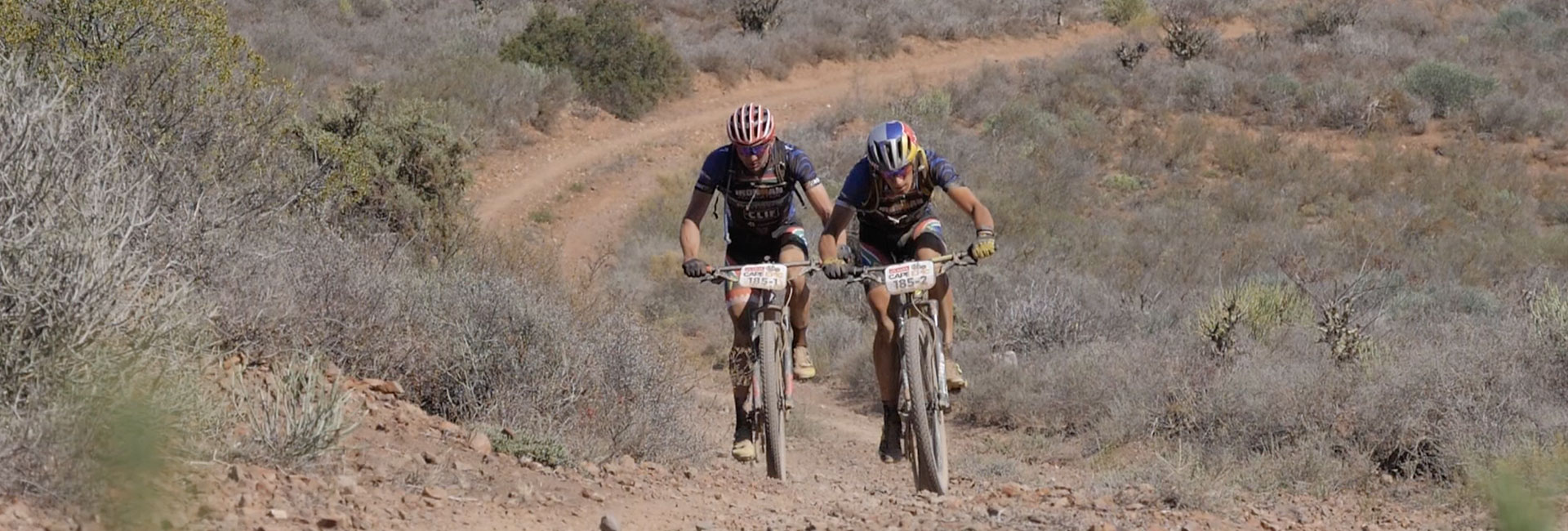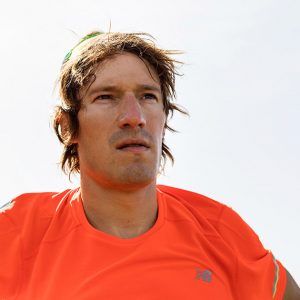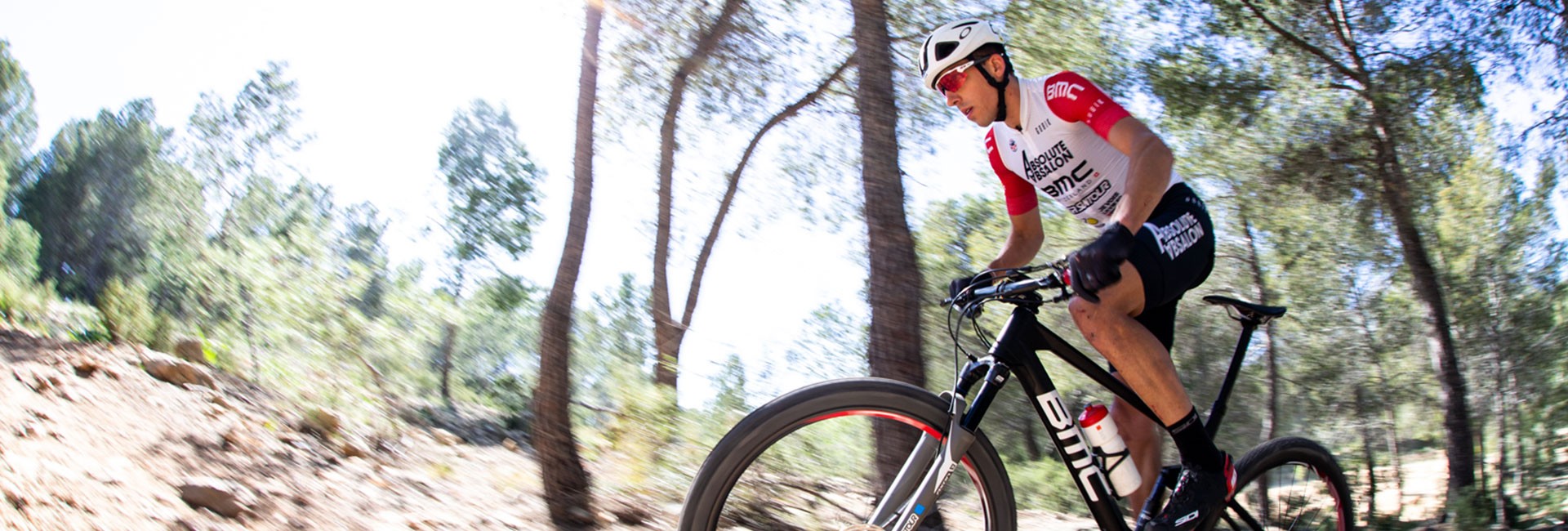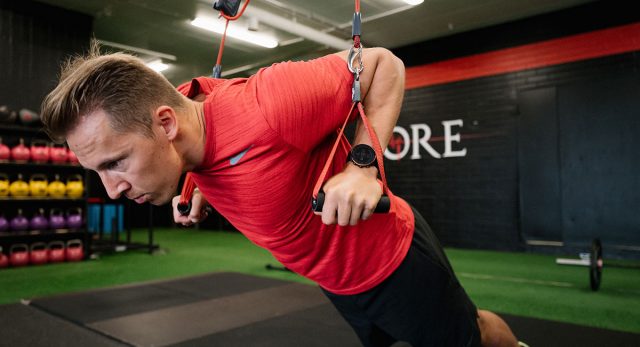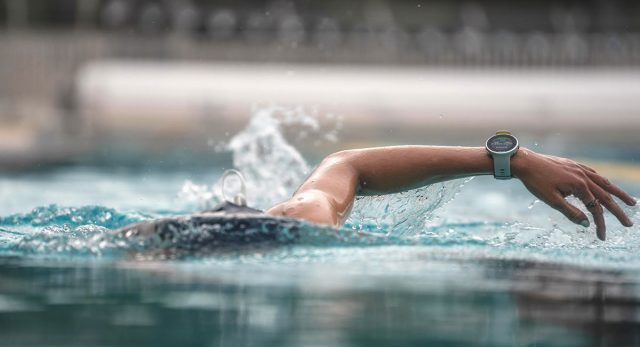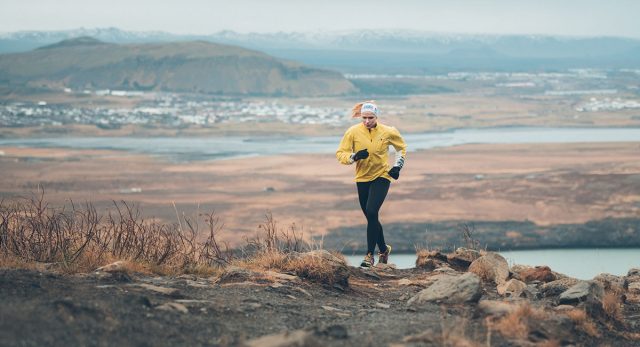What has mountain biking got to do with triathlon? Read on to find out as pro triathlete Sebastian Kienle shares his TOP3 mountain biking tips for runners and triathletes.
The endurance world is one where the lines delineating each sport are blurred:
- Just because you’re a swimmer doesn’t mean you can’t cross country ski.
- Just because you’re a cyclist doesn’t mean you can’t train for your local half marathon.
Lately, though, it seems there’s been a specific trend spreading throughout in the triathlon and running scenes. As unlikely as it sounds, several top pros are dipping their toes in the rough-and-tumble sport of mountain biking.
These clean-shaven, highly-tuned endurance machines are swapping their aerodynamic superbikes and race flats in for knobby tires and a little bit (or lotta bit) of mud.
Sebastian Kienle is one such triathlete. He’s one of the most influential and successful triathletes of all time, winning the 2014 IRONMAN World Championship (with three other podium finishes) and executing back-to-back gold medal performances at the 2012 and 2013 IRONMAN 70.3 World Championships.
When sticking to a strict training regimen of swimming laps, trainer intervals and mind-numbing running base miles for months on end, it makes sense why mountain biking is attractive:
It’s a great way to get outside and mix in a not-so-structured cross-training workout that directly benefits triathlon (and running) performance.
Here Kienle shares how mountain biking complements endurance training, his “top three” mountain biking tips for triathletes and runners and why, to him, mountain biking isn’t as scary as people believe.
It’s time to leave the tarmac and put some hair back on those legs.
What Are the benefits of mountain biking for runners And Triathletes?
For endurance athletes who enter races, mountain biking is great practice for handling crosswinds, downhills, corners, aid stations and more. Especially during the winter, mountain biking or cyclocross can be a great complement to indoor training.
Most importantly, mountain biking is fun and different. It offers your body (and brain) new stimulus, which is important to stay mentally and physically in shape. Other than that it helps with bike handling skills, strength, and is effective interval training.
Although for me, it’s more like a game than a real structured workout.
Why did you start mountain biking?
I love it because it’s different. I feel fast when going down a narrow path on a downhill and there’s no traffic. Mountain biking makes me feel free, like I’m not doing a workout per se, just enjoying the ride outdoors.
I also love to watch the sport as a fan, no matter if it’s the Enduro World Series or the UCI Mountain Bike World Championship in either cross country or downhill. I love to watch athletes who make super difficult things look easy.
Have you experienced fear while mountain biking?
I find mountain biking less dangerous than road cycling — cars are way more dangerous than nature.
I broke my arm a long time ago on the trails when I pushed a little bit too far, but I always feel like I have control on the mountain bike.
When mountain biking, it’s my choice to tackle a difficult trail, whereas on the road, my life is in somebody else’s hands.
What Kind of MTB challenges have you faced so far?
The biggest challenge is being realistic about your skills. You know, when you don’t ride enough but you still think “I can ride this trail“.
It’s wise to ride with others, better riders than yourself — you can learn so much if you can ride on somebody’s wheel.
What is your favorite mountain bike Trail and race?
The trails around Livigno are pretty nice — there is something for everybody.
I haven’t done that much mountain bike racing, but I think the BC Bike Race in Canada is on my shortlist as well as the Swiss Epic.
Kienle’s TOP3 mountain biking tips for endurance athletes
- First, ride with somebody who is technically better than you and who is willing to help and give tips.
- Second, get good equipment from a good bike shop, tires and suspension are the most important.
- Lastly, ride as many trails as possible — that’s the easiest way to improve your technical skills. You can also go to a camp where you can use a lift to get more downhill experience.
If you liked this post, don’t forget to share so that others can find it, too.
Or give it a thumbs up!
I like this article
Please note that the information provided in the Polar Blog articles cannot replace individual advice from health professionals. Please consult your physician before starting a new fitness program.
